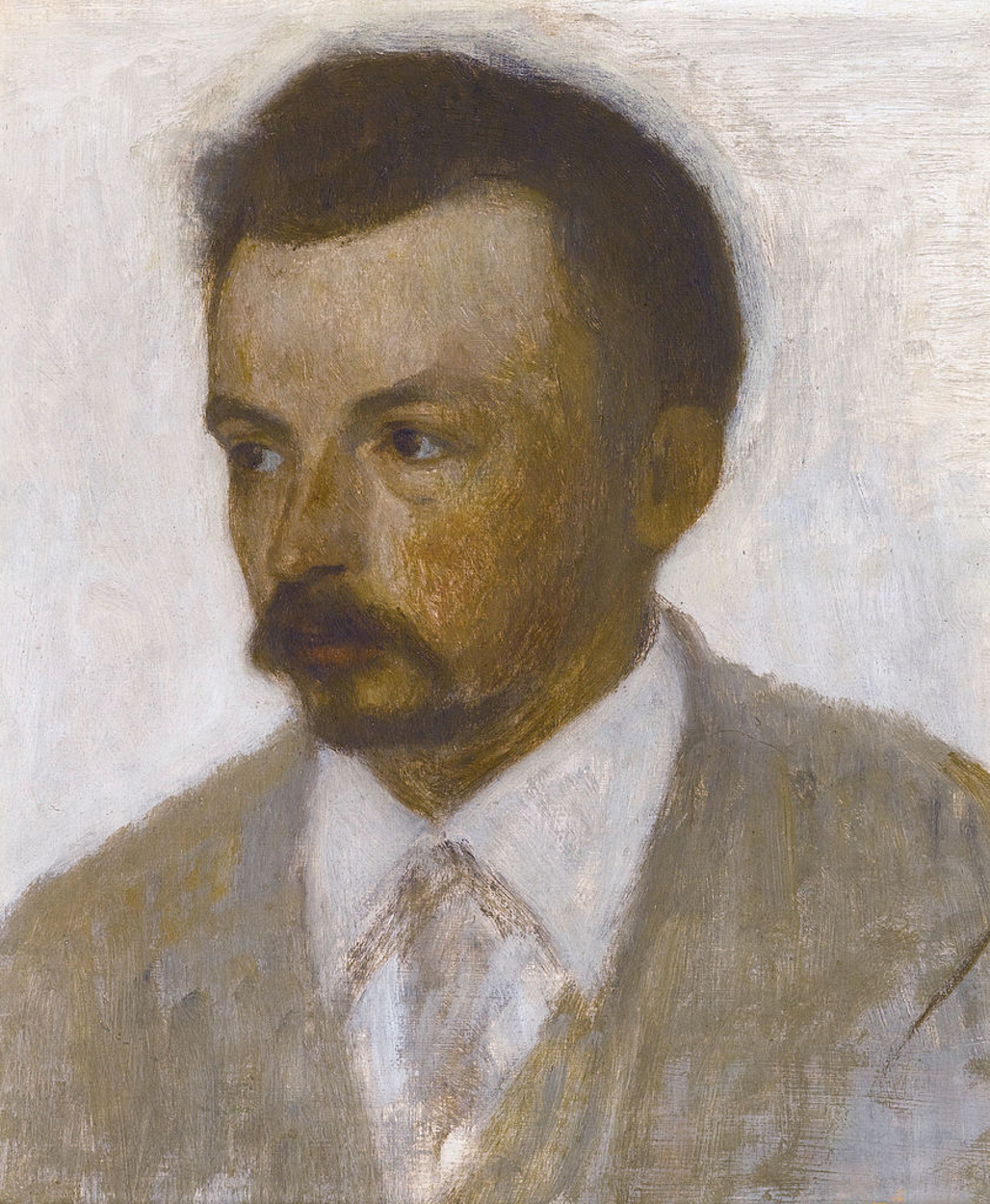



Vilhelm Hammershøi
Vilhelm Hammershøi, often written in English Vilhelm Hammershoi, was a Danish painter. He is known for his poetic, subdued portraits and interiors.
Hammershøi worked mainly in his native city, painting portraits, architecture, and interiors. He also journeyed to the surrounding countryside and locations beyond, where he painted rolling hills, stands of trees, farm houses, and other landscapes. He is most celebrated for his interiors, many of which he painted in Copenhagen at Strandgade 30 (where he lived with his wife from 1898 to 1909, and Strandgade 25 (where they lived from 1913 to 1916). He travelled widely in Europe, finding London especially atmospheric in providing locations for his highly understated work, suffused as it was at the time with a foggy, coal smoke polluted atmosphere. His work in consequence has been described as "Monet meets the Camden School".
Hammershøi's wife figures in many of his interiors, often depicted from behind. Ida is also the model in many similar works by her brother, Peter Ilsted. Peter and Vilhelm were lifelong friends, business partners, and colleagues.
Hammershøi's early works, with their simplicity and recording of the "banality of everyday life", enjoyed critical acclaim. He was sought out by artists and literary figures of the time, among them Emil Nolde and Rainer Maria Rilke, who both remarked on his retiring manner and reluctance to talk. After a trip to Paris, his work became overly detailed. According to art critic Souren Melikian, his "painterly skill remained but the magic was lost."
Hammershøi’s melancholic vision has now regained its place in the public consciousness. He is now one of the best-known artists in Scandinavia, and comprehensive retrospectives of his work have been organized by the Musée d'Orsay in Paris and the Guggenheim Museum in New York. In 2008, the Royal Academy of London hosted the first major exhibition in Britain of Hammershøi’s work, "Vilhelm Hammershøi: The Poetry of Silence". Hammershøi’s only painting on constant display in Britain is 'Interior' in the National Galler